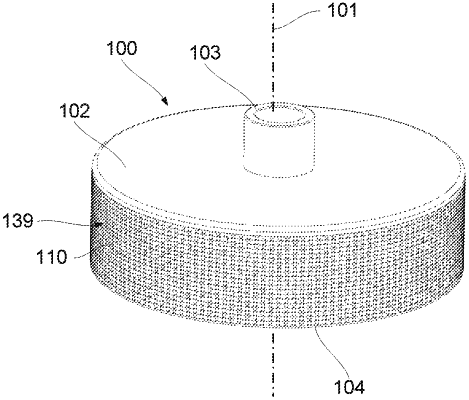| CPC C12M 35/04 (2013.01) [C12M 29/04 (2013.01); C12N 15/87 (2013.01)] | 20 Claims |

|
1. A cell processing apparatus for processing cells using mechanoporation, the cell processing apparatus comprising:
a processing assembly comprising multiple processing components, comprising a processing component, a second processing component, and a third processing component stacked along a primary axis, wherein:
each of the multiple processing components comprises dividers,
each of the dividers comprises a first divider wall, a second divider wall, and a first surface, extending between the first divider wall and the second divider wall,
each of the multiple processing components further comprises a channel wall, ridges protruding from the channel wall, and a second surface,
the first surface of the processing component directly contacts the second surface of the second processing component,
the first divider wall, the second divider wall, the channel wall of the processing component and the second surface of the second processing component define multiple channels extending in a direction perpendicular to the primary axis and configured for flowing a cell media containing a population of the cells such that the ridges of the processing component extend into each of the multiple channels, and
each of the ridges of the processing component forms a gap with the second surface of the second processing component such that the gap is smaller than a diameter of at least one cell in the population of the cells thereby causing compression of the at least one cell while the population of the cells passes through the gap.
|